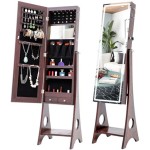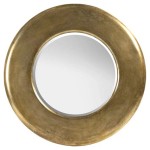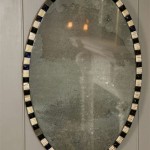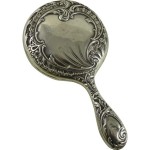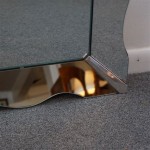How To Do Mirror Painting
Mirror painting offers a unique approach to creating reflective and visually captivating artwork. This technique involves painting on the reverse side of a piece of glass, resulting in a mirrored image when viewed from the front. This article provides a comprehensive guide to the process of mirror painting, covering material selection, design considerations, painting techniques, and sealing the finished piece.
Materials Required: Several essential materials are required for mirror painting. These include a piece of glass or mirror, preferably with smooth edges; specialized glass paint designed for reverse glass application; paintbrushes of varying sizes and shapes suitable for detail work and broader strokes; a design template printed on paper; masking tape or painter's tape; a palette or mixing surface for paints; and a sealant appropriate for glass surfaces.
Glass Selection and Preparation: The choice of glass is crucial. Clear, unblemished glass is ideal. Existing mirrors can also be used, but the reflective backing will need to be removed using a specialized mirror remover product. The glass surface must be thoroughly cleaned with a glass cleaner and allowed to dry completely before any painting begins. Any dust or fingerprints will be visible in the final piece.
Design Transfer: The chosen design needs to be reversed before transferring it onto the glass. This is essential due to the mirrored nature of the finished piece. Digital image editing software can easily flip the design horizontally. The reversed design is then printed onto paper. Secure the printed design onto the back of the glass using masking tape, ensuring it lies flat against the surface. The design will be visible through the glass, allowing for accurate painting.
Painting Techniques: Mirror painting requires working in reverse, starting with details and highlights and progressing towards broader areas and background colors. This approach ensures that overlapping layers of paint create the desired effect when viewed from the front. Fine-tipped brushes are useful for outlining details and applying highlights. Larger brushes are employed for filling in larger areas and creating background effects. Allow each layer of paint to dry thoroughly before applying subsequent layers to prevent smudging or blending of colors.
Paint Selection: Specifically formulated glass paints are essential for successful mirror painting. These paints adhere well to glass surfaces and provide vibrant, long-lasting color. They are available in various finishes, including transparent, opaque, and metallic, allowing for a range of artistic effects. Experimenting with different paint types can yield interesting textures and visual depth in the finished piece.
Layering and Blending: Layering colors is a key technique in mirror painting. Applying translucent layers over opaque colors allows light to pass through, creating depth and luminosity. Blending colors directly on the glass can be challenging, so it's often preferred to pre-mix colors on a palette before applying them to the glass.
Creating Special Effects: Several techniques can enhance the visual appeal of mirror paintings. Applying metallic paints can create reflective highlights and add a luxurious touch. Using textured paints can add dimension and interest to the surface. Experimenting with different brushstrokes, stippling techniques, and even incorporating small decorative elements can further personalize the artwork.
Drying and Sealing: Allow the painted glass to dry thoroughly in a dust-free environment. Drying times vary depending on the type of paint used and the thickness of the layers. Once completely dry, seal the painted side of the glass with a sealant designed for glass surfaces. This protects the painting from scratches, moisture, and fading, ensuring the longevity of the artwork.
Framing and Display: Once the sealant is dry, the painted glass can be framed. Choose a frame that complements the artwork and provides adequate support. When displaying the mirror painting, consider the lighting conditions. Proper lighting can enhance the reflective qualities of the piece and highlight the colors and details of the painting.
Practice and Experimentation: Mastering mirror painting requires practice and experimentation. Starting with simple designs and gradually progressing to more complex compositions allows for skill development and exploration of various techniques. Experimenting with different color combinations, paint types, and application methods can lead to unique and captivating results.
Cleaning and Maintenance: Clean the finished mirror painting using a soft, dry cloth. Avoid abrasive cleaners or harsh chemicals that could damage the paint or sealant. Regular dusting will help maintain the clarity and brilliance of the artwork.

Diy Tutorial On Mirror Painting How To Paint A

How To Paint A Mirror With Pictures Wikihow

How To Paint A Mirror With Pictures Wikihow

How To Paint A Mirror With Pictures Wikihow

How To Paint A Mirror With Pictures Wikihow

How To Paint A Mirror With Pictures Wikihow

Diy Painted Mirror Wallpaper Backgrounds Painting

Ic Calligraphy Glass Painting On Mirror How To Do It At Home

How To Make A Mirror With Pictures Wikihow

Ic Calligraphy Glass Painting On Mirror How To Do It At Home

